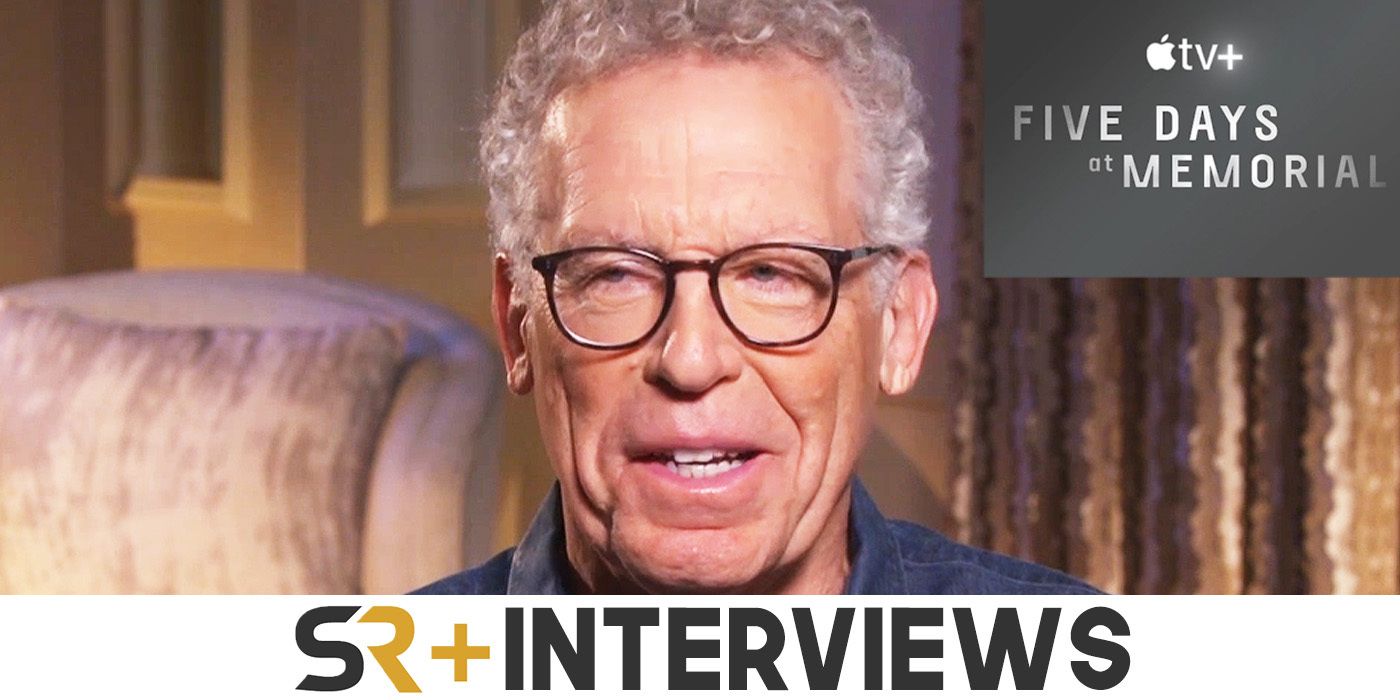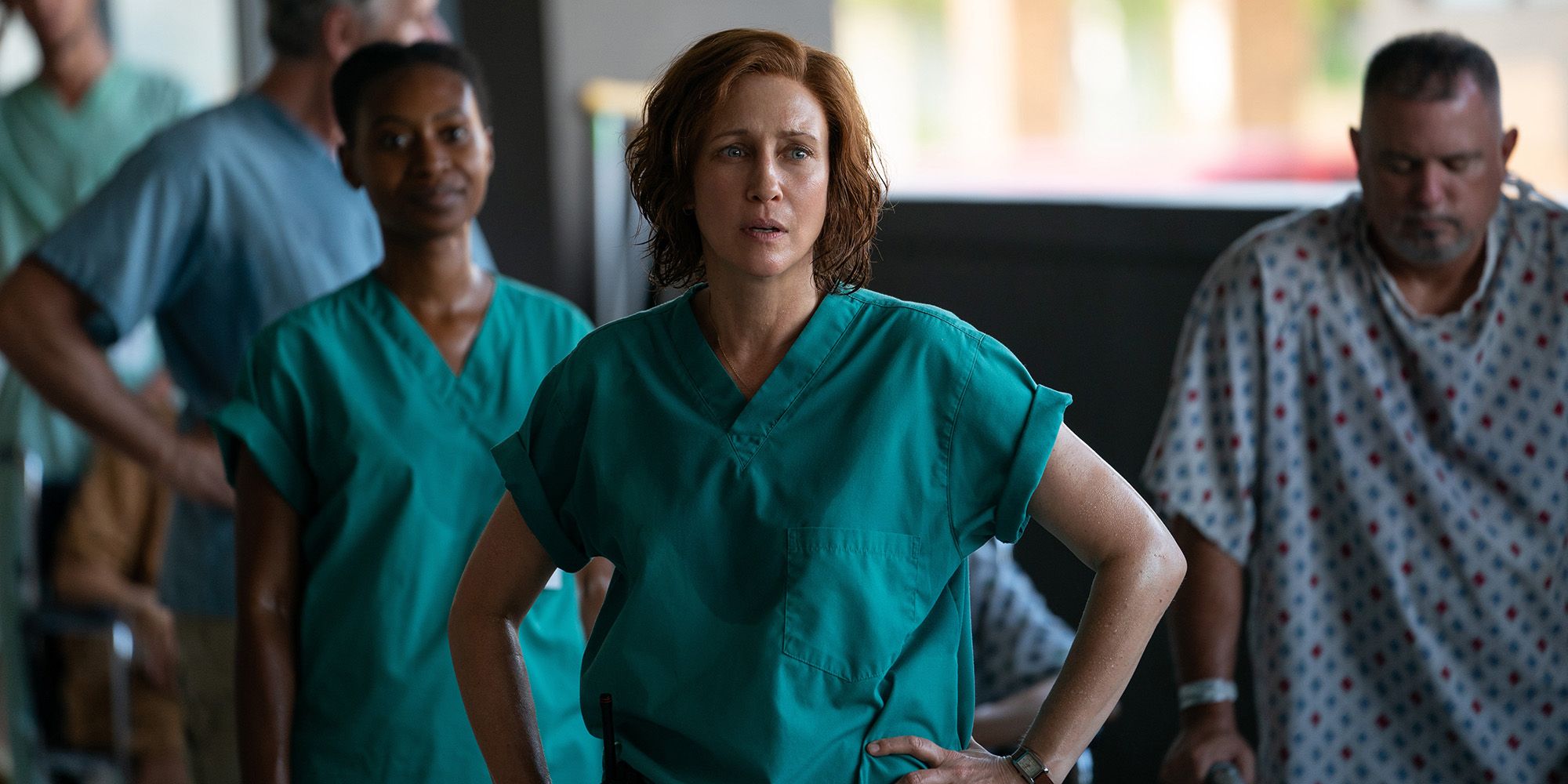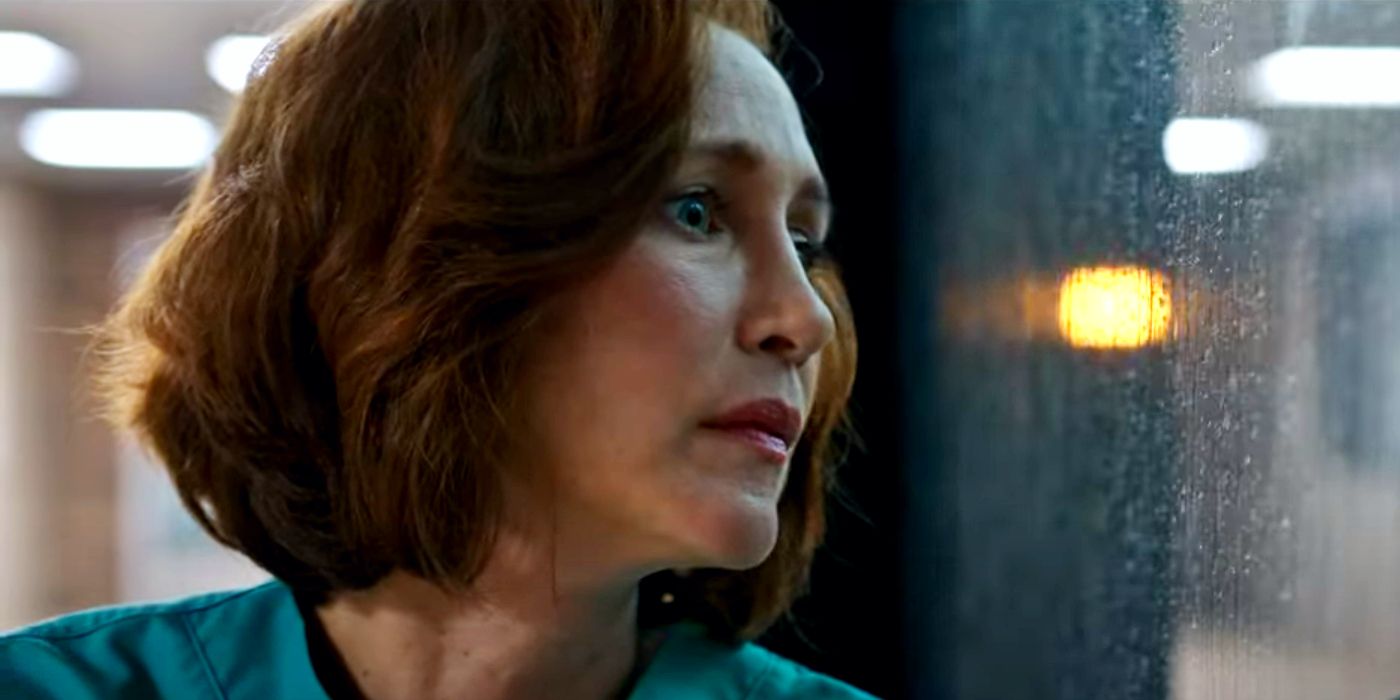Carlton Cuse serves as writer and director on AppleTV+ miniseries Five Days at Memorial, a show that tracks the aftermath of Hurricane Katrina at one hospital in the flooded city. Based on the real-life events that transpired at the titular hospital where 45 patients were found dead after the hurricane, the series is based on Sheri Fink's Pulitzer Prize-winning reporting and book of the same name. Five Days at Memorial stars Vera Farmiga, Cherry Jones, Cornelius Smith Jr., Julie Ann Emery, Adepero Oduye, and Michael Gaston.
Cuse is best-known for shows like Lost, Bates Motel, and The Strain. Five Days at Memorial represents a departure for the multi-hyphenate as it tackles the events of Hurricane Katrina and its aftermath, events that have a resonance with things that are still unfolding today.
Screen Rant sat down with Cuse to discuss the series, including building 4 million gallon water tank for the set, how the creative process mirrored the events of the show, and why it was important to tell this story.
Screen Rant: With Five Days at Memorial, you could kind of say it's outside your typical wheelhouse in terms of what you're best known for. So I was really curious, what made you want to tell this story?
Carlton Cuse: I love the story, and that was really the driving force. I read Sheri Fink's book, and it just got in my head, and it just wouldn't leave my head. And I had to outwait two big producers, Scott Rutan and Ryan Murphy, to finally get the rights. And then I enlisted John Ridley to work with me on it and we collaborated on the telling of the story. It's a little more dramatic than other stuff that I've done, but I don't know.
One of my idols is Steven Spielberg, who makes a lot of genre storytelling, but then will do Lincoln, or Schindler's List, or more serious, dramatic fair. And I think it also fits into what I love to do, which is cross-genre storytelling. So I sort of see this as a disaster thriller crossed with a medical ethics drama. And so it may be a little bit different in form, but I think it is connected to things that I've done in the past.
This show isn't an easy watch, but it feels like a vital story to tell. As a writer and director, with these events being so relevant even today, how do you decide what to show and what not to show? Where do you draw the line?
Carlton Cuse: I think that's just the essence of the creative process that John and I went through. We spent a lot of time talking about what we were going to show and not show and it's tough. I think that this was a pretty harrowing story and we wanted to make sure that we were authentic and that we had a high degree of fidelity to the story. But we also wanted to make sure that we didn't overwhelm the audience or get to a place where people were like, "I just have to turn this off." It's kind of an aesthetic judgment question. I think that we tried to find that place where we were being honest and true to the story, but without either being sensationalist or grotesque in a way that would disengage an audience.
You worked with Sheri Fink as a producer on this, adapting her work. Were you able to talk to anybody that was involved with the events? Or was anybody willing to kind of share their experiences with you?
Carlton Cuse: We made an intentional decision not to talk to any of the actual participants. We just use Sheri's book, and also her additional research, as our narrative resources. Sheri's book is brilliant. She interviewed over 500 people, she spent six years working on it, [and] she won a Pulitzer Prize for her initial reporting. It was just so rigorous and so rich and detailed, we just didn't feel we needed anything beyond that.
What's so interesting about Five Days as well, is there are some clear and frightening parallels to be drawn from the events of Hurricane Katrina and the failure of infrastructure and government to what we are and will be facing with climate change. Was that on your mind while making the show?
Carlton Cuse: Oh, very much so. First of all, John and I started working on it right before the pandemic in the Fall of 2019. The entire creative process took place during the pandemic. So we went to Canada, we had to lock down in our housing for two weeks without ever leaving the place separately, as did all the actors. They all had to quarantine and the city was locked down. We couldn't go anywhere. So we were experiencing a medical crisis while telling a story about a disaster that turned into a medical crisis and so of course, that had resonance. I think anybody who's gone through this pandemic is going to bring those personal experiences to bear in watching the show, and I think in a good way.
John said something to me early on that I loved, which was, "History rhymes." And I think that that's very much the case. And I think we see a lot of the same systemic failures happening during this pandemic that we saw happen during Katrina. And I mean, the more important question is, will we ever learn from these experiences? Can we get to a place where we're not putting healthcare workers in the untenable position of having to make impossible decisions about who gets prioritized for health care?
Speaking of shooting during the pandemic and under those constraints, you're staging a massive set with the actual hospital. What was that like bringing it together? Was there anything that was particularly difficult?
Carlton Cuse: All of it was difficult. I mean, we were telling this very tough emotional story but we also had immense technical challenges, which was, how do you recreate a flooded city? I mean, 80% of New Orleans was underwater, and the hospital itself was under between four and eight feet of water. So we built a 4 million gallon water tank that was big enough to drive boats around inside and the actors when they're arriving and departing from that hospital, that's actually all happening in a way that I think was very real and similar to what it was like actually at Memorial Hospital.
And we had to do a lot of things technically to recreate the helipad and the storm. The walkway that Anna Pou crosses at the end of the first episode was actually built and buffeted by wind and rain. That was a practical thing. So we did a lot of things to really simulate what it was like to be in this hurricane and in the flooding that followed, and that was really important for the storytelling, and it was really hard to pull that stuff off and make it feel authentic and integrated into the story. But that's the challenge that you undertake when you make a film. It's more than just telling the story, you have to then technically execute it at a high level to make the audience feel like what they're watching is authentic.
Five Days at Memorial Synopsis
Based on actual events and adapted from the book by Pulitzer Prize-winning journalist Sheri Fink, “Five Days at Memorial” chronicles the impact of Hurricane Katrina and its aftermath on a local hospital. When the floodwaters rose, power failed and heat soared, exhausted caregivers at a New Orleans hospital were forced to make decisions that would follow them for years to come.
Check back throughout the week for interviews with the cast of Five Days at Memorial.
The first three episodes of Five Days at Memorial premiere August 12 on Apple TV+, followed by new episodes every Friday.



